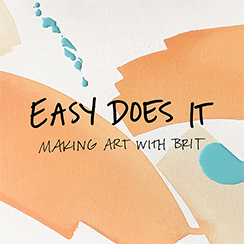March 2025: Soak stain
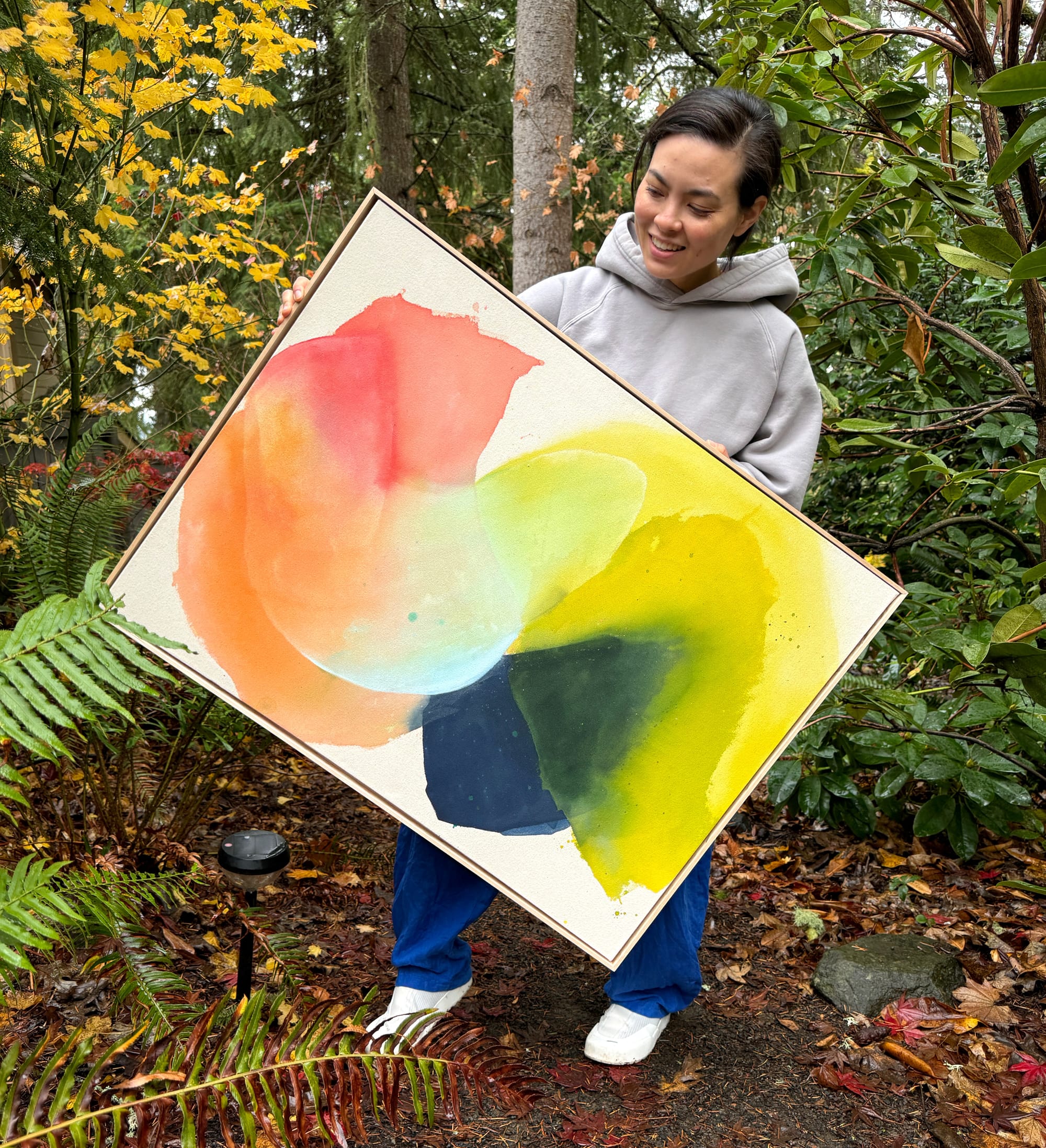
I was inspired early on by seeing abstract paintings made on raw canvas using a technique where artists would pour thinned paint that would absorb into the substrate. I didn't know what it was called then, and did not have much luck looking up resources on how to paint this way. For a few years I experimented, learning from my own exploration and from bits and pieces I'd see in other artists' work online. Eventually the process started to come together for me: after a couple of years of trial and error I was starting to find my groove, and I also found out that this approach has a name. It's the soak stain technique, created by Helen Frankenthaler in the 1950s.

Frankenthaler started by diluting oil paints in turpentine and pouring them on raw canvas, and then adapted this to acrylic paints, which were new on the market in the 1950s and 1960s. Acrylics are a better fit for the technique since they are stable on raw canvas; oil paints will erode the fiber fabric over time. Since then, acrylics have become the primary medium used for soak stain.
As a complement to this post, check out this month's EDI Live class where I demonstrated the concepts and explained them real time.
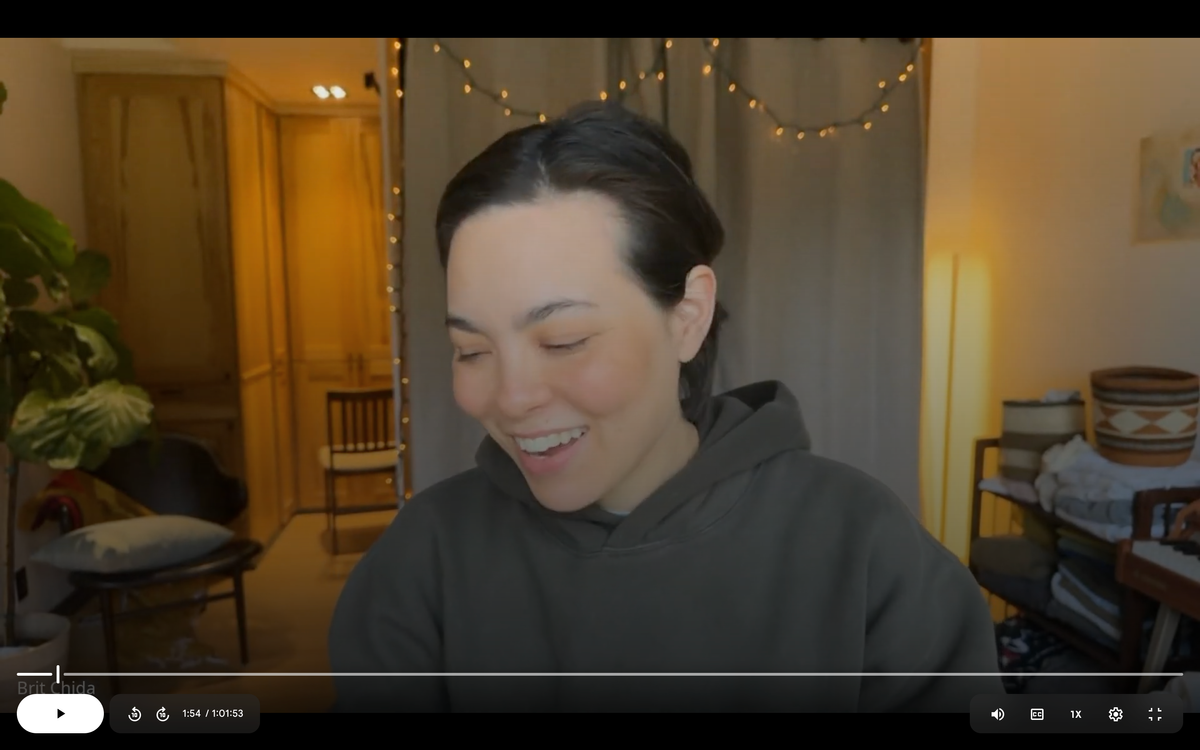
Soak stain method
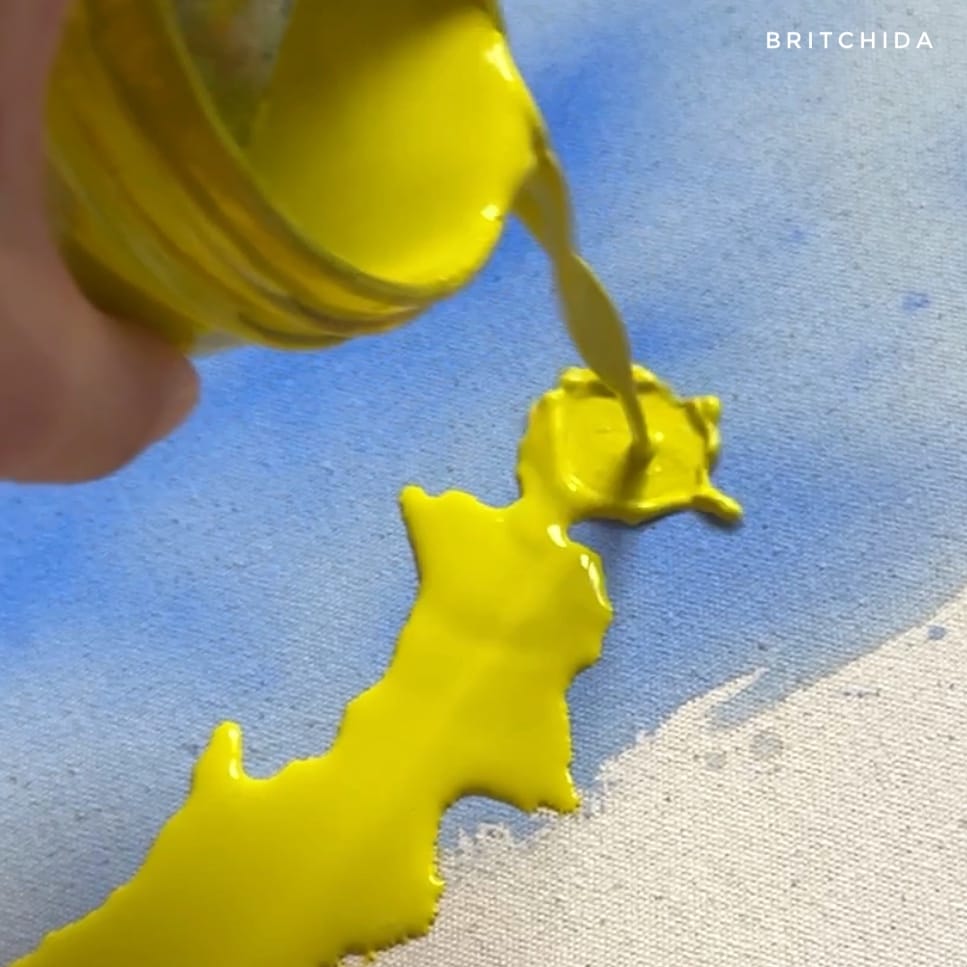
How it works
Typically when painting with acrylic on canvas, the canvas is primed with gesso which creates a slightly textured but non-absorbent surface. When you put your paint down it sits on top of the canvas. In order to stick to the canvas it needs some kind of binder to work as a glue. With acrylics, this is the acrylic polymer that the pigments are mixed with to make the paint. In order to make a stable layer of paint that won't flake off, the paint can't be diluted that much. You can picture it like glitter: If you put down glitter without enough glue (because you diluted the glue with a bunch of water), once it dries the glitter will fall off.
In soak stain, the pigment is sticking to the canvas by soaking into it. Now the paint isn't working like glitter that's glued to the surface, it's working like wine that spills on your shirt and stains it: the pigment sticks because it gets worked into the fabric itself. Because we are staining, we can dilute our paint a lot more.
Since it's soaking in, we will also need a much larger amount of paint solution. An example from the kitchen: painting on a primed surface is like coating raw carrots in oil, it doesn't soak in so a little goes a long way. Compare that to tossing bread in oil to make croutons: you need a lot more oil, every time you pour it on it seems to disappear into the bread.
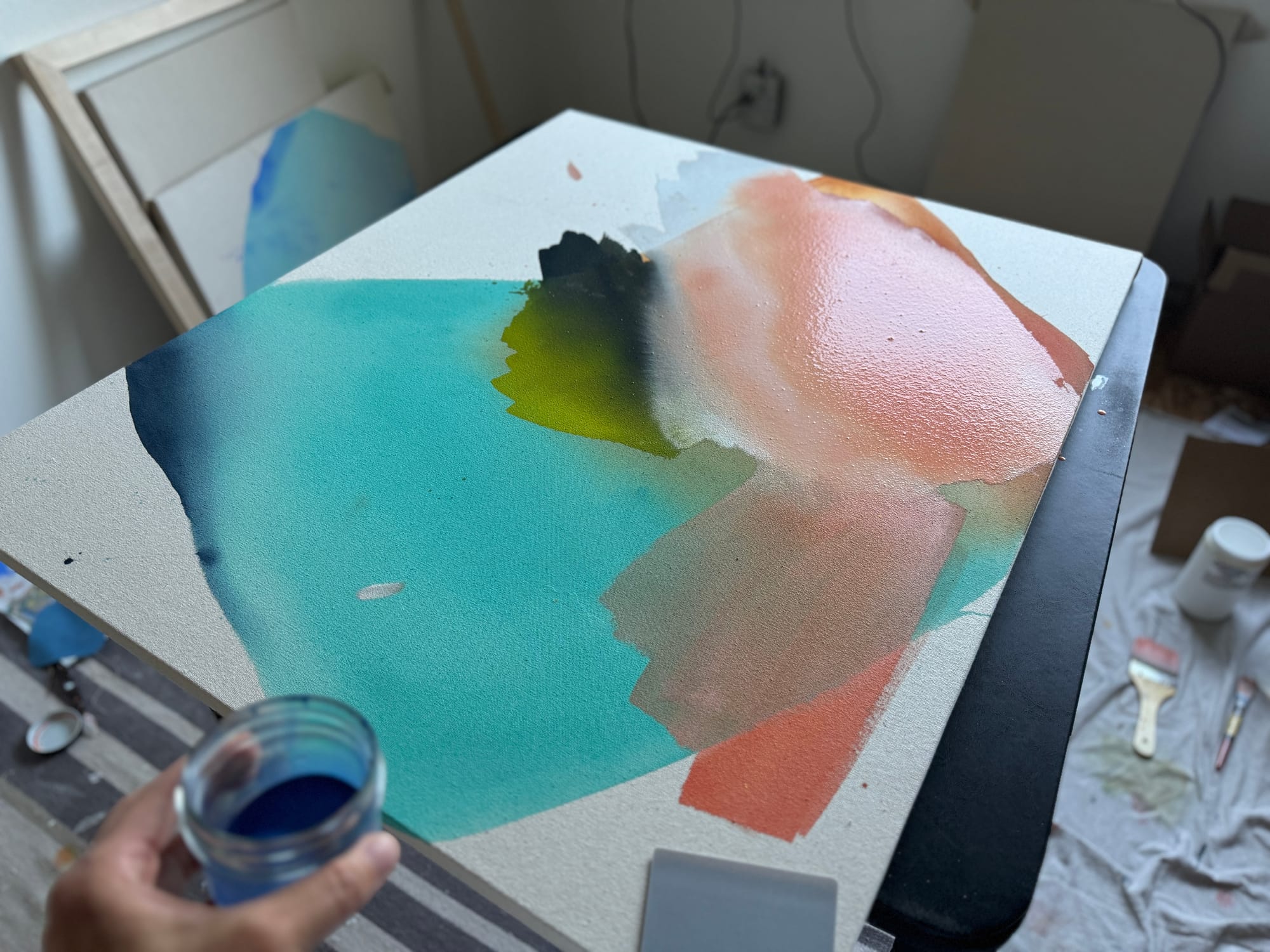
Supplies
Here's what I use:


